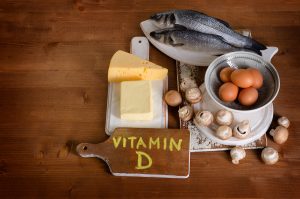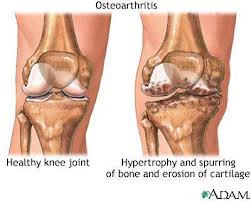In the last few years we learnt a lot about vitamin D3, but the newest thing is that high vitamin D3 prevents cancer.
Researchers at the University of California, San Diego School of Medicine reported that with respect to several cancer types higher doses of vitamin D3 led to less cancer over a period of time.
The cancers investigated were colon cancer, breast cancer, and lung and bladder cancer. People absorb vitamin D3 differently. The researchers found that the best way to measure vitamin D3 concentration in the body is to use serum 25-hydroxyvitamin D (25(OH)D). In the past people did not pay much attention to this matter. However, several studies including the present study showed that in patients who had a lower level of 20 ng/ml cancer rates were higher.
Comparison of two cohort studies
The researchers used data from two prior studies, a randomized clinical trial of 1,169 women and a prospective cohort study of 1,135 women. The researchers found that the age-adjusted cancer incidence was 1,020 cases per 100,000 person-years in the randomized clinical trial, called “Lappe cohort”. The other prospective cohort study was called the “GrassrootsHealth cohort” where cancer incidence was 722 per 100,000 person-years. The interesting fact was that the Lappe cohort median blood serum level of 25(OH)D was 30 nanograms per milliliter, while the GrassrootsHealth cohort had a higher level of 25(OH)D of 48 ng/ml.
Higher vitamin D levels correlate with lower cancer incidence
This likely explains the lower cancer rate in the GrassrootsHealth cohort. Researchers combined the two trials in order to increase the statistical significance . The striking finding was that above 40 ng/ml the overall cancer risk was more than 71% lower than for the group of people whose level of 25(OH)D was 20 ng/ml or lower. The above ScienceDaily article was based on this scientific study.
Other studies showing high vitamin D3 prevents cancer
AfroAmerican men had less prostate cancer, if vitamin D level was higher
In a 2015 study Afro American men were found to have 71% less prostate cancer, if their serum 25-hydroxyvitamin D level was at least 30 ng/ml or higher.
Prospective study showing high vitamin D levels cancer protective
This 2006 study reported a 14-year prospective follow-up in men where all cancers were counted and blood serum 25-hydroxyvitamin D levels were correlated to cancer incidence. An increase of 25 nmol/L (=10 ng/ml) in predicted serum 25(OH)D level showed an association of a 17% reduction in total cancer incidence, with a 29% reduction in total cancer mortality and a 45% reduction in digestive-system cancer mortality. These investigators stated that it takes about 1500 IU of vitamin D3 increase per day to achieve an increment of serum 25(OH)D increment of 25 nmol/L (=10 ng/ml).
University of Arizona Cancer Center study
A publication from the University of Arizona Cancer Center in Jan. 2016 is more critical of the evidence regarding vitamin D3 and the claim that it lowers cancer rates. The researchers reviewed the cancer literature and found that for colorectal cancer there is a clear inverse relationship between serum 25(OH)D levels on the one hand and rates and mortality of colorectal cancer on the other hand. However, with breast cancer the literature was more divided. Only higher vitamin D levels were related to a lower risk for progression of breast cancer and a lower mortality rate. Randomized, double-blind clinical trials with regard to breast cancer failed to show effectiveness on cancer prevention or reduction of mortality. For prostate cancer conditions were similar with the exception of a study using 4000 IU of vitamin D3 per day, which inhibited progression of prostate cancer.
Mouse model regarding ovarian cancer and vitamin D
In a mouse model using a carcinogen to induce ovarian cancer there was an inverse dose-relationship between vitamin D3 and ovarian tumor development both in tissue culture and in the animal.
How high vitamin D3 prevents cancer
Immune stimulating effect of vitamin D3
Several studies have attempted to speculate how vitamin D3 may prevent cancer. Chirumbolo summarized the literature and noted that vitamin D3 has been shown to function as an immune cytokine stimulating the immune system non-specifically. Vitamin D3 is also anti-inflammatory and counters insulin resistance and inflammatory kinins in obesity. Flavonoids with their antioxidant activity are also cancer preventing. We know that low levels of vitamin D have an association with higher cancer frequency. This means,. it is important to use vitamin D3 as supplements in our diet.
Chinese study describing action of vitamin D3 in detail
This Chinese study examined the effects of vitamin D3 on cancer prevention. It found that vitamin D3 combines three specific actions in one. Vitamin D3 is anti-proliferative meaning that it stops uncontrolled cell division. Secondly, it has an apoptotic (cell death) effect, which means it supports the removal of cells that are dying. If they are dying, but not removed, cancer can occur from these cell remnants. The third effect of vitamin D3 is that it has differentiating effects in several malignant cell types. When cancer cells are non-differentiated (=more immature cells) cancer can multiply quickly. Mature cells find it more difficult to turn cancerous. This is an effect that controls the speed by which cancer cells divide and how quickly cancer metastasizes.
Conclusion
There still is some confusion about the effects of vitamin D3 regarding cancer prevention. In colorectal cancer the statistics are clear: vitamin D3 can significantly prevent colorectal cancer to a large extent. There are also preventative effects in breast cancer and prostate cancer. But individuals may have to take at least 4000 IU of vitamin D3 or more. This is particularly true in higher latitudes where sunlight exposure is lower in the wintertime. Also, people absorb vitamin D3 differently. For this reason it is important to at least check your serum 25-hydroxyvitamin D levels on a few occasions. This will tell you whether your vitamin D3 supplementation is sufficient. Aim for levels in the 50-80 ng/ml, which is health promoting.
Apart from cancer prevention vitamin D3 is also important for prevention of cardiovascular disease. This is particularly true for diabetes, osteoporosis and Alzheimer’s disease.









